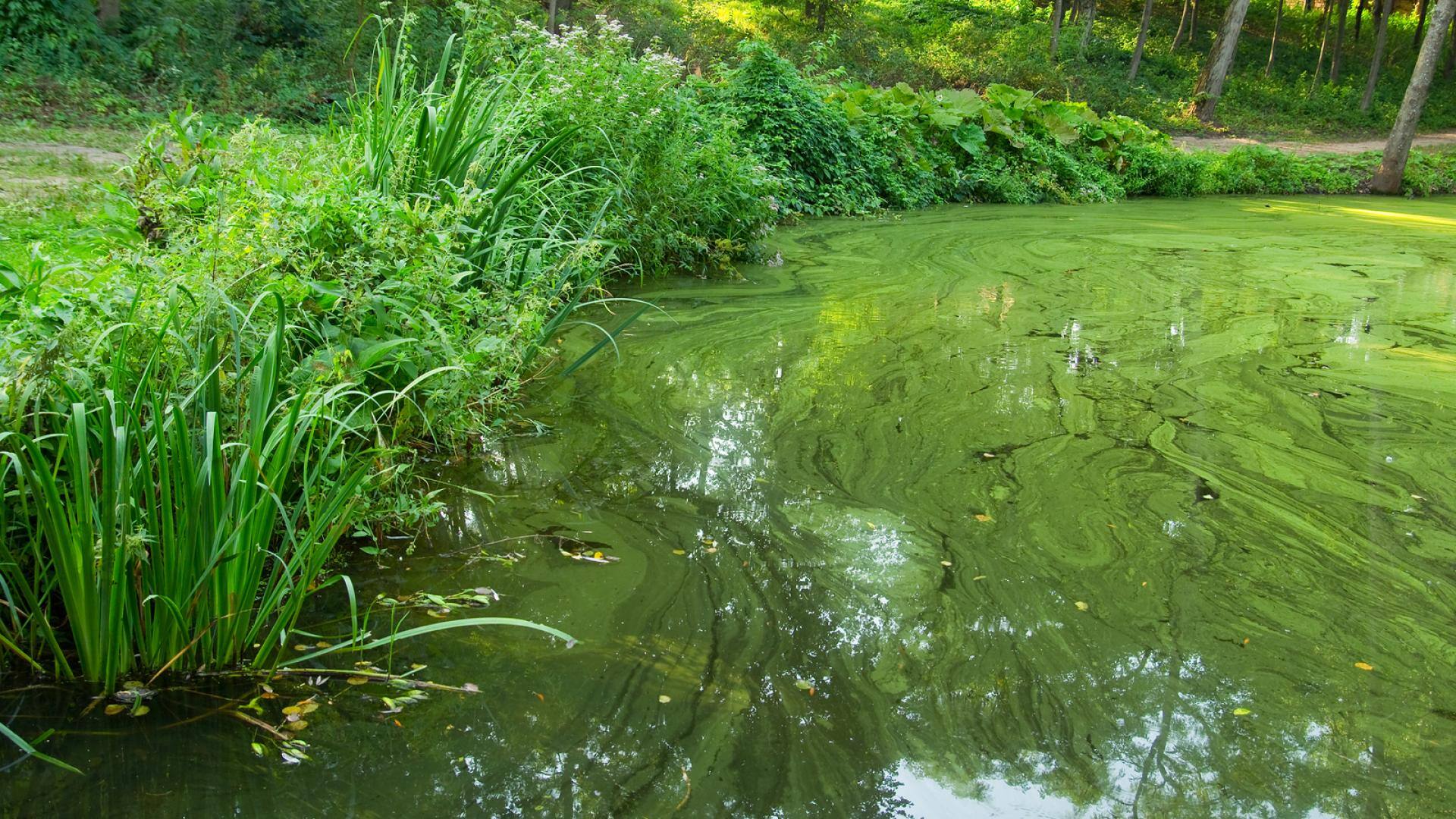Request a Free Estimate
We don't just manage your pond or lake; we transform it into a beautiful, thriving ecosystem. It's what we love to do.

Cyanobacteria are naturally occurring microorganisms that are common in lakes, ponds and slow-moving rivers. They photosynthesize and are often blue-green in color, which is why they are sometimes called blue-green algae. Unfortunately, some of these organisms produce toxins that can affect humans and animals. In certain conditions, nutrient rich bodies of water can support rapid growth of cyanobacteria or harmful algal blooms (HABs). The bloom might appear as streaks or an oil-like film on the water surface. Some varieties form blue-green scum several inches thick in shallow areas along the shoreline and produce strong odors. HABs occur in ponds and lakes throughout the country, limiting recreation and putting the health of people and ecosystems in jeopardy. While managing these blooms can be difficult and discouraging, they can’t just be ignored.
Our biologists frequently meet with pond owners frustrated by cyanobacteria blooms. They've added an aerator their pond or tried using algaecides but find themselves in a constant cycle of reoccurring blooms. Many simply don't understand what changed in their waterbody to result in these dense blooms. Excess nutrients are generally to blame. Nutrients like phosphorus and nitrogen are important for biological functions in the pond. However, in excess, they may fuel the rapid growth of these blooms - especially in warm weather. Nutrients enter the pond from runoff, lawn fertilizer, leaf litter, grass clippings and even pet/wildlife waste.
Jones Lake Management offers professional HAB control service as part of our annual maintenance programs. These maintenance programs focus on the health of the whole pond ecosystem, not just treating the symptoms of a problem and includes regular biologist visits to your pond or lake. These frequent visits mean we can catch a bloom in the early stages and target it before it spreads out of control. But we're not just relying on algaecides. We also employ aeration and phosphorus binders to help restore balance to nutrient levels. Reducing available phosphorus and improving water quality with aeration can even prevent future HABs from occurring. Our regular visits also allow us to better understand your dynamic pond ecosystem and develop the best management strategies possible to keep your pond healthy for years to come.

.jpg)
What are cyanobacteria?
Cyanobacteria are naturally occurring microorganisms that are common in lakes, ponds and slow-moving rivers. They photosynthesize and are often blue-green in color, which is why they are sometimes called blue-green algae.
Why does my pond look worse as the day goes on?
Many cyanobacteria species can regulate their buoyancy and float to the surface to form an oil-like film or a blue-green scum. Under certain conditions, a relatively clear body of water can become opaque and murky with a green, blue-green or reddish-brown bloom within days. Unfortunately, some of these organisms produce toxins that can affect humans and animals.
How does exposure to cyanobacteria toxins occur?
HAB exposure generally occurs via direct skin contact or accidental ingestion. Symptoms of exposure can include skin rashes, nausea, vomiting, throat irritation or trouble breathing. HABs have also been known to sicken and even kill pets and livestock with the toxins they produce. In animals, symptoms of exposure to HAB toxins include sluggishness, seizures, vomiting or diarrhea. Pets should be kept out of the water if you suspect a bloom – don’t allow them to drink or swim. If they swim in affected water, prevent them from licking their fur afterward.
How can I determine if toxins are present?
A lab test is necessary to determine if toxins are present in a cyanobacteria bloom. It’s safest to simply treat every bloom as harmful and practice avoidance.
Get More Out of Your Water. Take the next step toward a healthier, more enjoyable lake or pond. Request a customized estimate today!
About Jones Lake Management
Since 1949, Jones Lake Management has been a trusted leader in lake and pond management, delivering scientifically backed solutions to create and maintain healthy, balanced, and beautiful waterbodies. Our expert team offers a full range of services, including fish stocking, fisheries management, water quality monitoring, algae and aquatic weed control, aeration solutions, erosion control, invasive species management, hydraulic dredging, and more. Whether you manage a private lake, an HOA stormwater pond, a golf course water feature, or a municipal waterway, we provide customized solutions to ensure your waterbody remains healthy, functional, and thriving.
We can handle any issues you are having with aquatic vegetation. Check out these services for more information, or contact us for a free quote.

We don't just manage your pond or lake; we transform it into a beautiful, thriving ecosystem. It's what we love to do.